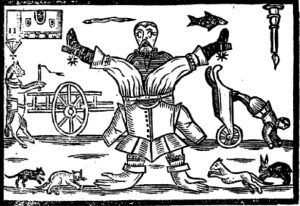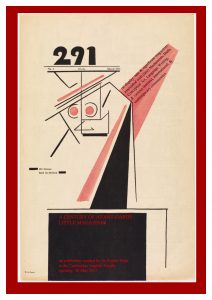Wednesday, 31st January, at 8.45 p.m.
James Carley: In the Footsteps of the King: John Leland’s Visit to York in 1541
Friends of Peterhouse Seminar Room, Peterhouse
Wednesday, 7th February, at 8.45 p.m.
Dennis Duncan: Sex and Violence and Pseudonyms: Editions du Scorpion and the Post-War Avant-Garde
Friends of Peterhouse Seminar Room, Peterhouse
Thursday, 15th February, 6 p.m. — 8 p.m.
Drinks reception as guests of G. David
An opportunity to meet exhibitors before the Cambridge Book Fair, David’s Bookshop
Wednesday, 28th February, at 8.45 p.m.
Daniel Margócsy, A Census of Vesalius
Friends of Peterhouse Seminar Room, Peterhouse
Wednesday, 7th March, at 3 p.m.
Visit to the Library of Pembroke College
Assemble at the Porter’s Lodge of Pembroke
Thursday, 15th March, at 8.45 p.m.
Informal meeting, hosted by Scott Mandelbrote, with Basie Gitlin as guest of honour
4 St Peter’s Terrace, Peterhouse
Julia M. H. Smith is giving the Birkbeck lectures at Trinity this year, dates and titles as below. Julia is currently planning on holding an open seminar on the day after the final lecture, particularly for interested graduate and early career researchers, to pick up on the topics arising from her talks, details of which will follow closer to the time.
Julia Smith (Chichele Professor of Medieval History, University of Oxford) on ‘Christianity in Fragments: the Formation of the Cult of Relics, c. 300-800.’
5 February: ‘Refashioning the Holy Land’
12 February: ‘Material Blessings’
19 February: ‘Protecting Body and Soul’
26 February: ‘Martyrs, Bones and Bodies’
All lectures take place in the Winstanley Lecture Theatre at 5.00 pm
NEWES FROM NO PLACE: A CONFERENCE ON JOHN TAYLOR, THE WATER-POET
June 14th, 2017Events; Jason Scott-WarrenJohn Taylor (1578-1653) was one of the most inventive writers of his age. Styling himself ‘The King’s Majesty’s Water-Poet’, he was at once a Thames boatman, a dazzlingly prolific author, and a literary celebrity. He was a pioneer in numerous literary forms, including travel writing, nonsense verse, and the ‘it-narrative’, and was one of the first writers to explore the possibilities of subscription publishing. Taylor was a satirist, a polemicist and a purveyor of printed news who invented the role of the foreign correspondent in his reports back from European war-zones. His works were also crucial to the formation of the British canon and to an emergent sense of national identity.
This conference will be the first to focus exclusively on Taylor’s vast and multifarious oeuvre. Bringing together a group of leading scholars, it will reconsider the significance of the Water-Poet to our understanding of seventeenth-century literature and culture, and his legacy in our own day.
The conference, sponsored by the Cambridge Centre for Material Texts and the University of Southampton, will run from 11.30 on 14 September to 2.15 pm on 15 September, in the Senior Parlour, Gonville and Caius College.
14 September
11.30-12 Registration
12-12.15 Welcome
12.15–1.30: Session One
Bernard Capp, ‘John Taylor goes to War: Civil War writings 1642–1648’
Abi Shinn, ‘“Pace, Amble, Trot, Hand-gallop, Wild-gallop, Fals-gallop”: Motion and Conversion in the Rebellious Roundhead’
1.30–2.15: lunch
2.15–3.30: Session Two
Ros King, ‘John Taylor, playfulness, and nationhood’
Ariel Hessayon, ‘“A Swarme of Sectaries”: John Taylor and the enemies of his religion’
3:30: tea and coffee
4.00–5.45: Session Three
Anthony Ossa-Richardson, ‘Sartor Resartus: Or, A Learned Taylor?’
Adam Smyth, ‘“For a Friers mouth read a Pudding”: John Taylor and the uses of error’
Jason Scott-Warren, ‘Exuvial Taylor’
15 September
9.15–11.00: Session Four
Kirsty Rolfe, ‘The coast of Bohemia: John Taylor’s imagined geographies?’
Jemima Matthews, ‘Taylor’s Thames: Performing local geography and other “useful matters”’
Andrew McRae, ‘Travelling Taylor: Developing an Authorial Identity’
11.00–11.30: tea and coffee
11.30–1.15: Session Five
Will May, ‘The Whimwham: travelling on Taylor’s watery vessels’
Alice Hunt, ‘“And so my journey and my book is done”: John Taylor, England’s Republic and his Final Works, 1649–1653’
Johann Gregory, ‘John Taylor and Engaging Audiences: Findings from a Pilot Project’
1.15–2.15: lunch
The cost of attendance, including lunches, teas and coffees, is £60 (waged) and £30 (unwaged).
Accommodation can be arranged in Gonville and Caius College at a cost of £65.25+VAT (single ensuite) or £81+VAT (twin/double ensuite).
On the night of 14 September, there will be a conference dinner (price not included in booking fee) at a local Indian restaurant.
For a conference flyer, click here. For a booking form in Word format, click here.
For further information, please contact the organisers, Anthony Ossa-Richardson (anthonyossar@gmail.com) and Jason Scott-Warren (jes1003@cam.ac.uk).
curated by Sophie Seita
Currently on display in the Cambridge English Faculty exhibition space is a selection of some of the most fascinating, rare, important, and often forgotten avant-garde magazines from the early twentieth century all the way up to the present day. ‘A Century of Avant-Garde Little Magazines’ celebrates the crucial and multifarious contributions magazines have made not only to the development of an individual writer’s or artist’s oeuvre, but to numerous national and international avant-garde groupings, and to cultural, political, and aesthetic tendencies more broadly. The exhibition includes print magazines associated with Dada, Modernism, the British Poetry Revival, the mimeograph revolution, feminist and contemporary communities, and a digital display of materials published on the peripheries of Conceptual Art and Conceptual Poetry, Language Writing, Fluxus, and many other avant-gardes. Moving away from a focus on the individual author or the single work, the exhibition emphasises the material richness and collaborative spirit of experimental publications and publishing communities, drawing attention to their innovations in design, typography, and aesthetic form, and to the collective work of editors, practitioners, readers, and other, often invisible, participants. The items on display are on loan from the Cambridge University Library, English Faculty Library, and private collections, while the digital materials are photographs taken in a number of archives, from the Beinecke Library (Yale), Fales (NYU), Princeton, New York Public Library, to MoMA, among others.
An introductory talk by Dr Sophie Seita, Junior Research Fellow at Queens’ College, will take place on Monday, 5 June, 3-4.30 in the Board Room of the Faculty of English.
An opportunity to discuss your current research with other CMT members. UL tea-room, 11am, Monday 13 March.
Jane Austen’s Sanditon – 200 Years: the history of an unfinished work
The Cambridge English Faculty is currently displaying material tracing the public life and textual forms of Sanditon, Jane Austen’s unfinished novel, which she composed in the year of her death, 1817.
The manuscript of Sanditon is held in King’s College, Cambridge, where Jane Austen’s great-nephew was Provost. This exhibition traces the public life and developing textual forms of Sanditon, from the first public reference to the work in James Edward Austen’s-Leigh’s 1871 Memoir of his aunt, through to the first published edition of Austen’s fragment (1925), the first facsimile edition (1975) and other continued, illustrated and translated editions, up to digital text. The items on display in this exhibition are on loan from Cambridge University Library and from the Gilson collection at King’s College, Cambridge.
The exhibition, to be found in the first-floor atrium of the Faculty, coincides with a conference about Sanditon to be held at Trinity College, Cambridge, 29-31 March, 2017: details, including registration information are here: https://sanditon200years.wordpress.com
CMT coffee and cake: Thursday 16 March, 10.30, in the exhibition space
Embodying Media: From Print to the Digital
February 2nd, 2017Calls for Papers, Events; Jason Scott-WarrenCALL FOR PAPERS
Date: Saturday, 27th May 2017
Venue: Faculty of English, University of Cambridge
Within the study of media theory and history, competing narratives have identified, on the one hand, the absorption of the human voice or body within the text, and, on the other, the development of technology and material texts as extensions of that voice or body. To date these narratives have been largely located from the twentieth century onward. This one-day conference aims to readdress these narratives within a longer historical and wider interdisciplinary perspective. From eighteenth century concepts of the bodily consumption of texts by readers, and words being impressed upon their brains, to more recent imaginings of the multi-sensorial spaces of digital texts and their distribution in the new media landscape, the relationship between the media of writing and the human body has been fraught with affective potentials. This conference aims to examine this relationship between the materiality of texts and the materiality of bodies by bringing together researchers from different disciplines and time periods across the study of textuality.
Moreover, this conference seeks to make use of the potentials of such media forms for academic study. Speakers will be asked to send a digital copy of material related to their presentation ahead of the conference. These materials will be uploaded to the conference website, allowing speakers to explore the implications of their research during their presentations and enabling participants to view the material before and after the conference itself.
Possible topic areas could include:
• The physiology of reading
• The multi-sensory experience of texts: visuals, sonics, and tactility
• Literacy and the materiality of the alphabet
• The (dis)embodied nature of writing
• Technology and media and/as bodily forms of writing
• Text processing from print to the digital
• The Internet and (post)human identity
• Pens, typewriters, keyboards, touchscreens, and other media of writing
• The place of the body in media theory and history
Keynote speaker: Dr Seb Franklin (Lecturer in Contemporary Literature, King’s College London)
Please submit a title and abstract of a maximum of 300 words, along with a short biographical note of up to 50 words, to embodyingmedia@gmail.com by 20th February 2017.
PETER STALLYBRASS, ‘Shakespeare’s Desk’
18 November 2016, 18:15 – 19:15
Room S1, Alison Richard Building, West Rd, Cambridge
A display of the work of J.H. Prynne is available to view on the first floor of the English Faculty, with additional materials in the Faculty Library.
Reading J.H. Prynne celebrates the poet’s role from the beginnings of the British Poetry Revival, as well as his influential part in the pedagogy of this university and the study of English abroad. The display includes poems, prose, correspondence, supervision handouts, a manuscript (facsimile), annotations, as well as responses to the work by longstanding friends and fellow poets. Of especial interest is a new poem in response to Sub Songs (London: Barque Press, 2010) written by John James, entitled On Reading J.H. Prynne’s Sub Songs (Ashburton: QoD Press, 2016), with artwork by Bruce McLean.
Other materials that are not widely available include a copy of the manuscript of Kazoo Dreamboats (Cambridge: Critical Documents, 2011), as well as the poet’s annotations to Al-Dente (Cambridge: Face Press, 2014). Both are available to be examined in the Library for the course of the display.
Reading J.H. Prynne will be on display until November.
Fitzwilliam Museum, Cambridge, 30 July – 30 December 2016
www.fitzmuseum.cam.ac.uk/colour
The COLOUR exhibition and its catalogue mark the bicentenary of the Fitzwilliam’s foundation by displaying 150 of the Museum’s illuminated manuscripts. They showcase the collection – the largest and finest museum collection of illuminated manuscripts in existence. They also celebrate the advanced research supported and inspired by the collection.
Two cross-disciplinary projects form the research platform for the COLOUR exhibition and catalogue: Cambridge Illuminations, which is publishing the 4000 illuminated manuscripts and incunabula preserved at the Fitzwilliam Museum and the Cambridge Colleges (www.fitzmuseum.cam.ac.uk/research/cambridgeilluminations), and MINIARE, which employs non-invasive analytical methods to identify materials and techniques in illuminated manuscripts, and integrates scholarship in the arts, humanities, physical sciences and digital technology (http://www.miniare.org/).
The research and themes presented by the COLOUR exhibition will be explored in a broader, international context during the conference organised by the Fitzwilliam Museum in association with the Departments of Chemistry and History of Art, Manuscripts in the Making: Art and Science, 8-10 December 2016 (www.fitzmuseum.cam.ac.uk/colour/conference).

